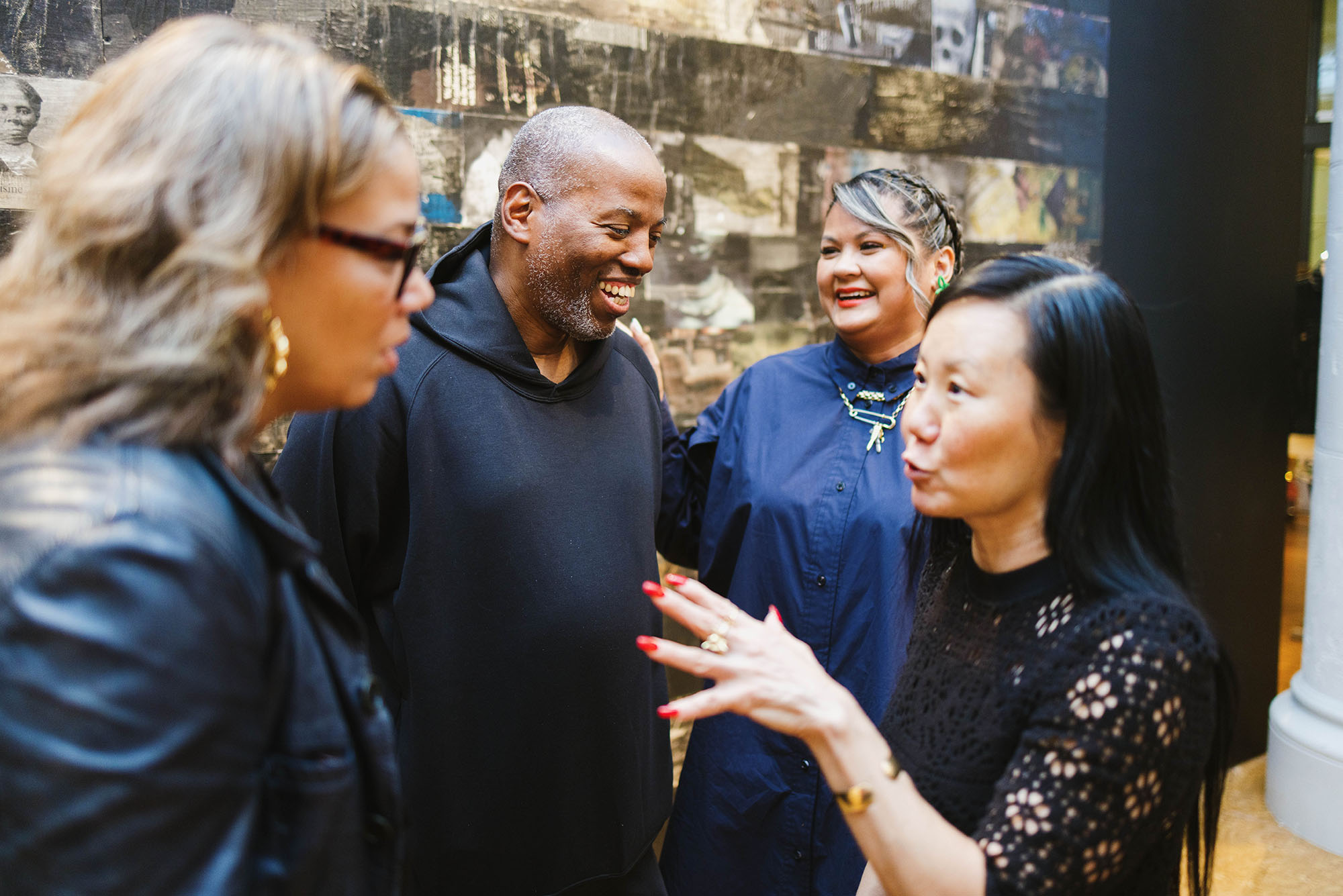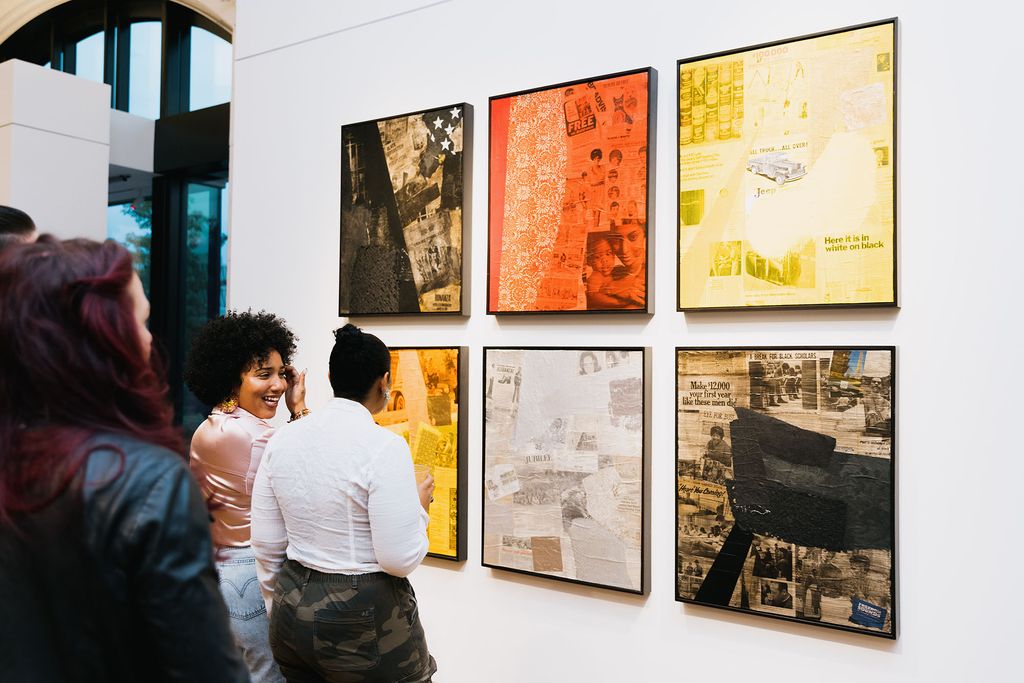Cey Adams, Creator of Hip-Hop’s Visual Language, Gets First-Ever Retrospective at Stone Gallery

BU Today feature: Cey Adams, Creator of Hip-Hop’s Visual Language, Gets First-Ever Retrospective at Stone Gallery
Traces his 40-year career through more than 60 works, including graffiti, graphic design, and fine art
This article was first published in BU Today on October 18, 2022. By Sophie Yarin | Photos by Jacob Chang-Rascle (COM’22)
Excerpt
Have you ever wondered why hip-hop music is associated with graffiti letters? Look no further than Cey Adams.
It may seem like the genre’s visual identity emerged organically, but it was Adams’ work as the founding creative director of the legendary Def Jam Recordings that married the burgeoning music genre to a street art aesthetic.
Adams has lived numerous lives over the course of his four-decade career. He’s been a subway car–tagging graffitist, a vanguard of the 1980s New York art scene, alongside contemporaries Keith Haring and Jean-Michel Basquiat, a visionary graphic designer, and most recently, a prolific collage artist and muralist. But never before has a retrospective shown his life’s work in one place. Until now.
Through December 11, visitors to the Faye G., Jo, and James Stone Gallery can walk through the narrative of Adams’ life, taking in photos of his early graffiti as they hang alongside a collection of the Def Jam album covers they influenced. The show, Cey Adams, Departure: 40 Years of Art and Design, shows how the artist’s contemporary work blurs the lines of his twin passions of fine art and graphic design, and explores his signature visual style—the telltale boldness, colorful curves, shapes, and letterforms, attention to detail, and vibrancy.

Show curator Liza Quiñonez says Adams’ collages incorporate the same sense of precision as does his earlier graphic design and graffiti work, both relying on exacting attention to detail and intentional use of reference material.
“This collection tells a really extensive story,” Adams says. “The story isn’t about me, but about those I’ve worked with along the way: the recording artists, the subjects, and the brand partners that were kind enough to partner with me and give me the space to make work.”
Lissa Cramer, BU Art Galleries managing director, says she’s thrilled to bring Adams’ work, which has become synonymous with his native New York City, to Boston.
“All artists bring a touch of who they are and where they’ve come from within their work,” she says. “Cey is from New York and his early graffiti will show that, but his work also captures a moment in history. Modern and contemporary art history covers Keith Haring and Andy Warhol, but Cey was right there in the mix with those artists in that time period.”
Starting at the end of the 1970s, Adams’ graffiti tags on brick walls and subway trains began to draw the attention of New York’s art world. His graffiti art was a foundational experience for him, but was short-lived in the grand scheme of his career, says show curator Liza Quiñonez, whose creative agency, Street Theory, coproduced the exhibition.